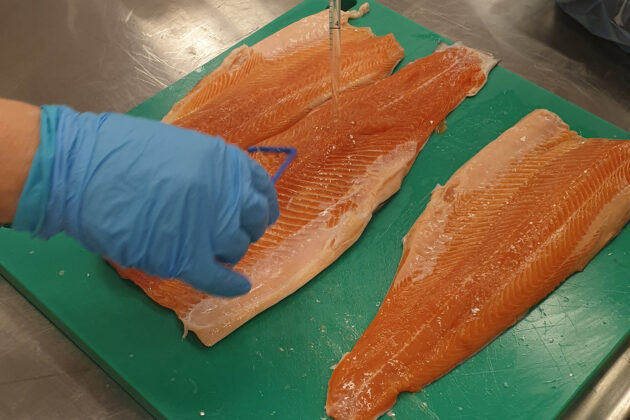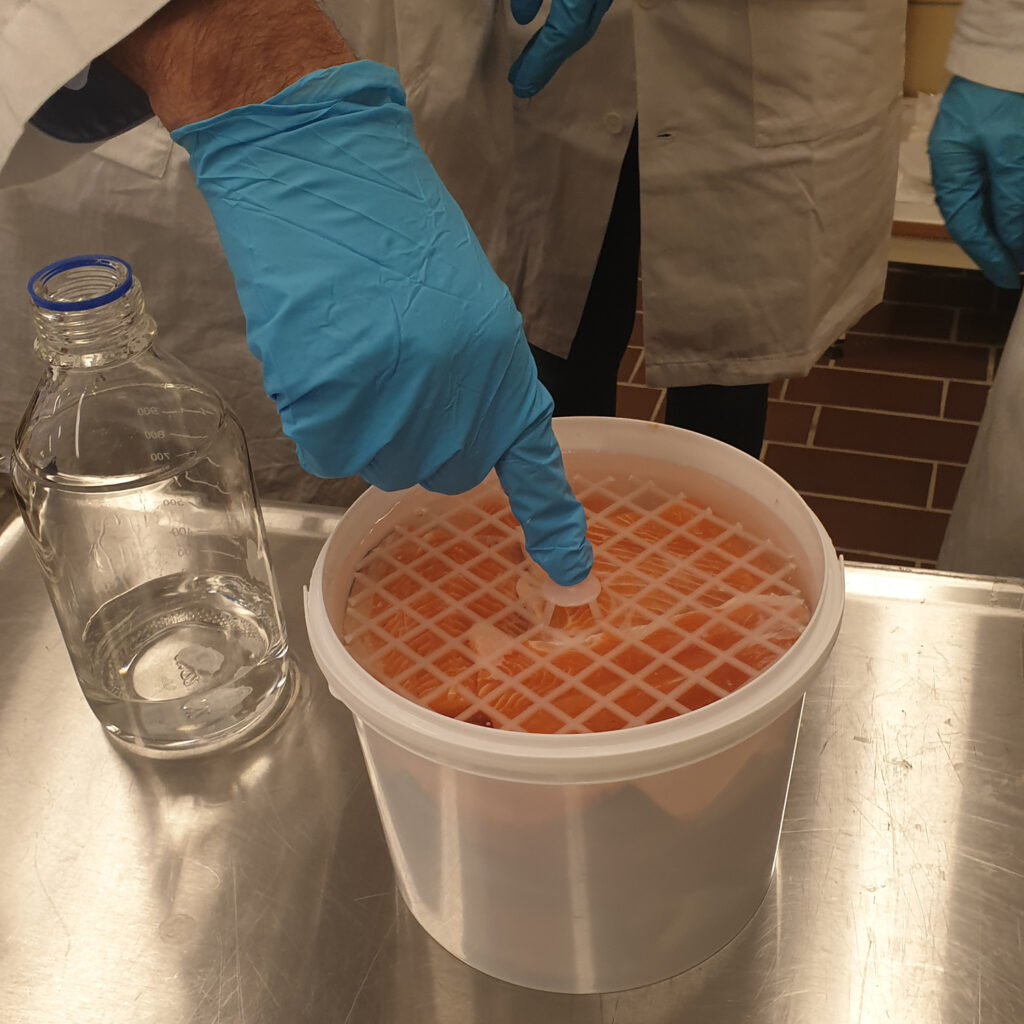Production of safe rakfisk: How to avoid Listeria

Scientists have discovered effective methods to stop the growth of Listeria in rakfisk. A bacterial food culture inhibits the patogen Listeria without affecting the taste.
Rakfisk is a traditional Norwegian product made by fermenting trout or char in brine. In recent years, there have been several outbreaks of food poisoning due to the bacterium Listeria monocytogenes. Nofima has led a three-year research project, Safe Rakfisk, aimed at making rakfisk safer.
“We have tested several different solutions to inhibit Listeria during the process and found two that work well. The first is a so-called protective culture, and the second is an inhibitory salt of the buffered vinegar type,” says senior scientist Lars Axelsson at Nofima, who has led the work.
Both of these are often considered “biosolutions,” meaning they are produced by natural processes, e.g. fermentation for the production of buffered vinegar. . Protective cultures are lactic acid bacteria with specific activity against unwanted bacteria and are often isolated from food. Buffered vinegar is a liquid or dried product that primarily contains acetic acid and its salts and is neutralised.

“In this case, we used the protectiveculture Lyoflora and the inhibitory salt Verdad. Interestingly, the effect of Lyoflora was enhanced by using a small amount of sugar when the fish was placed in the brine. This even resulted in some killing of Listeria,” adds Axelsson.
Desire for the same taste
Nofima has conducted surveys and interviews with people who eat rakfisk. Most of them are not very aware that Listeria can be a problem. At the same time, many are aware that rakfisk is associated with risk and that some groups, such as pregnant women, should avoid the product. As long as the taste is as expected, they accept that the production method is changed if it makes the rakfisk safer.
Nofima’s professional sensory assessors have tested untreated rakfisk, rakfisk treated with inhibitory culture, and rakfisk treated with inhibitory salt. They evaluated various properties related to taste, smell, and texture. The rakfisk treated with the bacterial culture Lyoflora is very similar to untreated rakfisk, while the inhibitory salt Verdad gave a somewhat more pungent and sharp taste.
During the Rakfisk Festival in Valdres, Norway, Nofima’s experts conducted a sensory test. 220 people tasted the same variants as the professional sensory assessors. The differences were small, but the test participants preferred rakfisk treated with Lyoflora over both untreated rakfisk and Verdad-treated rakfisk.
The rakfisk producers who tested the different treatments were also more satisfied with using Lyoflora than Verdad, as the rakfisk had unchanged quality compared to regular production. For fish treated with Verdad, the producers noted the same differences as Nofima’s sensory panel.
Better control of bacteria
Rakfisk is stored in plastic tubs, and producers regularly sample and analyze to prevent rakfisk with Listeria from reaching the market. When a producer found Listeria in a fairly large production batch, scientists had the opportunity to study how Listeria were distributed in the rakfisk tubs and which methods were best suited for sampling.
The Norwegian Veterinary Institute (NVI) worked on this part of the project. They quickly discovered that Listeria does not distribute evenly in the tubs/barrels.
“Samples taken from the bottom always contained Listeria when the bacterium was present in the tub, while the upper layers could be completely free of Listeria,” says senior scientist Taran Skjerdal at the NVI.
The recommendation is therefore to take samples from the bottom. The NVI has worked on the methodology and suggests using either extra-long pipettes to take samples from the bottom or lowering a gauze strip that absorbs brine from all levels.
These and other recommendations are useful for the rakfisk producers in the project.
“This has been a very concrete, interesting, and educational project. We have great faith that bacterial protective cultures can contribute to even safer production and are now starting a larger test production to ensure that it provides the same good taste to the fish,” says Nils Noraker at Noraker Gård og Rakfisk.
“We at Nofima and at the NVI have worked on the two most important areas relevant to the Listeria issue in rakfisk production: the ability to inhibit or kill Listeria in the process and improved methodology for detecting Listeria in the production tubs before the rakfisk is distributed to the market and consumed. We have achieved good results in both areas, and we therefore consider the project to be very successful. The results should be very useful for the industry,” concludes Axelsson.
Important Advice for Rakfisk Producers
1. To inhibit Listeria in the production process, use measures that have documented effects. This includes the bacterial culture Lyoflora along with a little sugar or buffered vinegar. However, start with trial production to become familiar with the technology and check the quality.
2.Take samples from the bottom of the rakfisk tubs as a sampling routine for detecting Listeria.
3. Keep the time between slaughtering and salting as short as possible and ensure that the fish is kept cold from slaughtering until it is placed in the tubs.
Facts about the Research
The research was conducted in the Safe Rakfisk project, which was completed in December 2024. The project was led by Nofima. Other participants include the NorwegianVeterinary Institute, Decon-X International, and rakfisk producers Wangensten, Noraker Gård, Haadem Fisk, Røn Gård, Trøsvik Gård, and Sæterstad Gård. The project is funded by the Research Council of Norway (RCN) and participating companies. The project number at RCN is 321515.
Contact persons
Research areas
Processing and food safety
Research facilities
